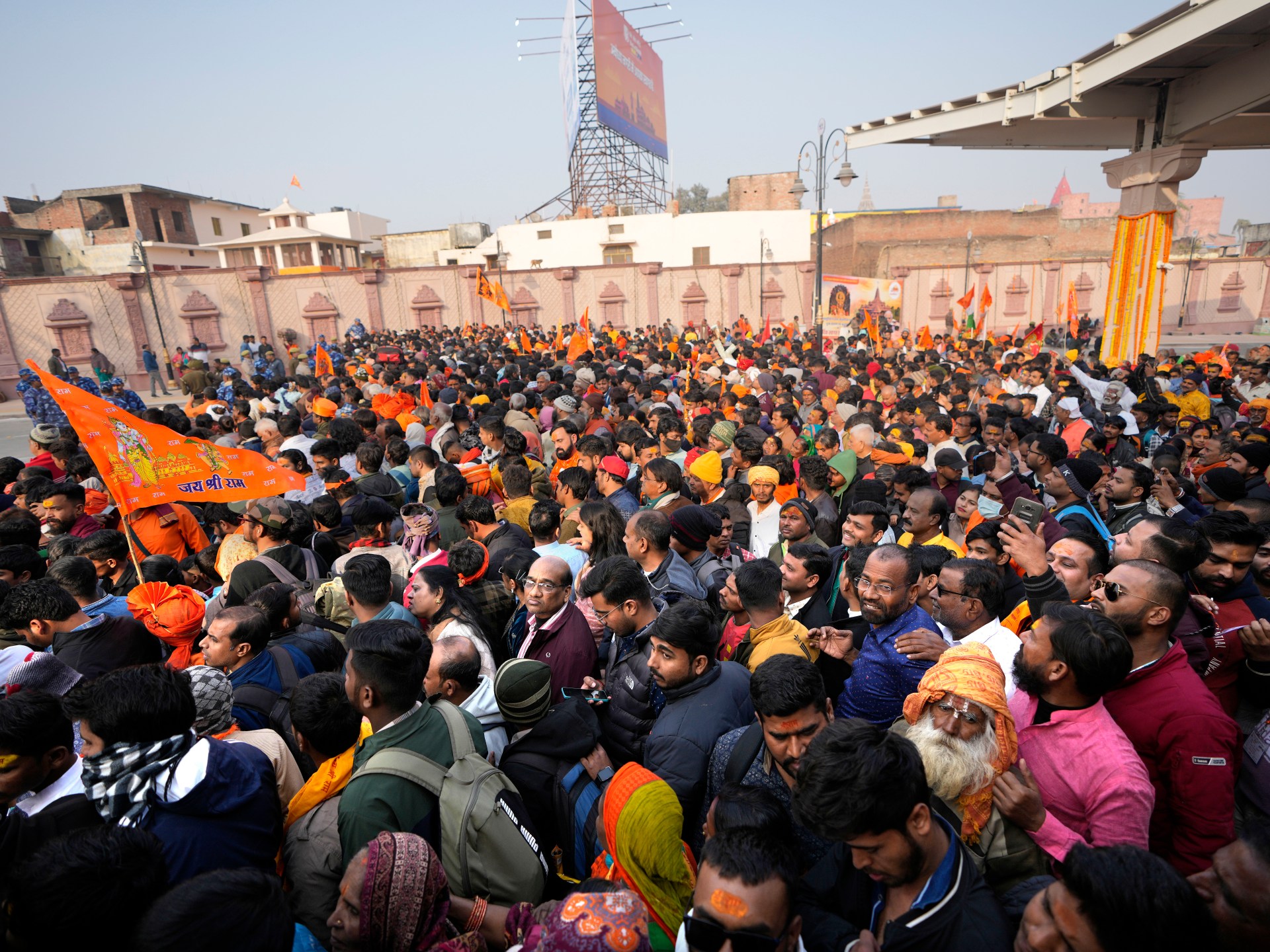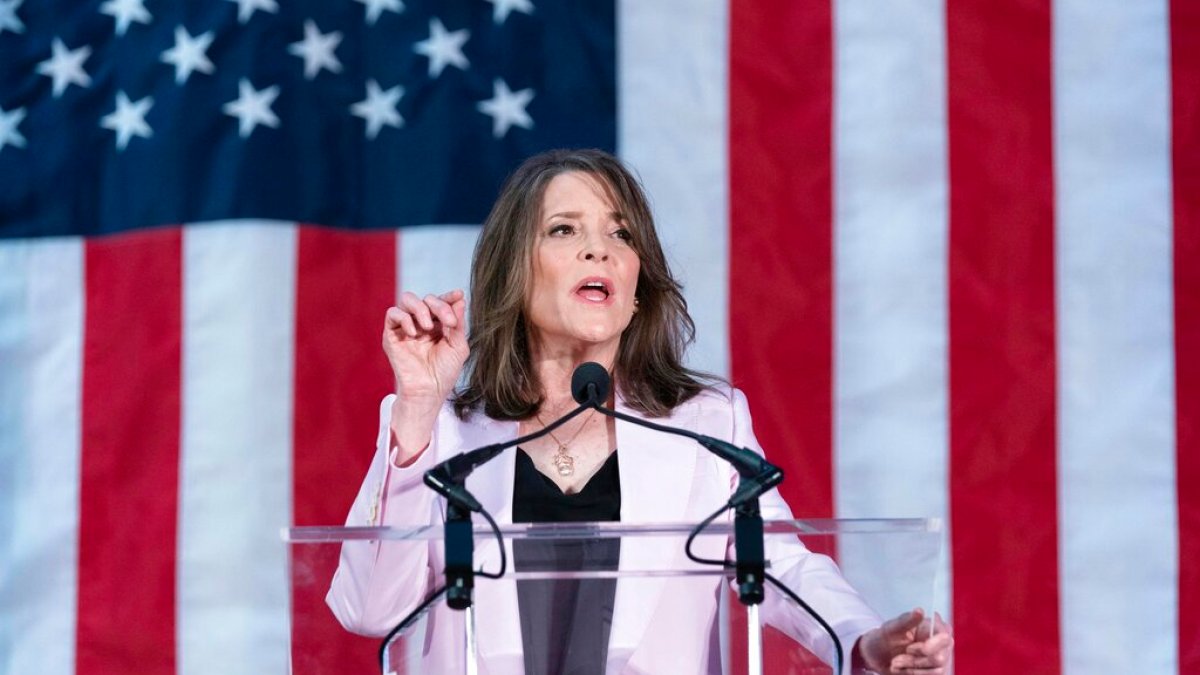
Ayodhya, India – As half a million people gathered at the gates of the new temple to the Hindu deity Ram, Brijesh Pathak looked on.
It was the day after Indian Prime Minister Narendra Modi dedicated the shrine amid a national furore that has drawn the attention of a country of 1.4 billion people to the temple town of Ayodhya in the northern state of Uttar Pradesh, where Hindu scriptures say Ram was staying born.
The devotees had come to catch a glimpse of Ram’s idol built in the large structure on the ruins of a 16th century mosque demolished by a right-wing mob in 1992.
But as the crowd grew larger, mass panic broke out outside the temple premises, said Pathak, the 32-year-old guesthouse manager. Buses and rickshaws were banned from the streets, police barricades were erected and even more security personnel were sent to the small town, which was unable to handle such a large number of visitors.
“It was a flood of people. “You could just see endless heads,” Pathak told Al Jazeera.
Just a day ago, the city was India’s most sought-after tourist destination after Modi, with scores of Hindu saints, film stars and business leaders landing there to inaugurate the controversial temple.
But as the prime minister and celebrities moved on, Ayodhya had to grapple with a new reality: a city now expected to welcome millions of tourists and pilgrims each year, but ill-prepared to receive them Business people and traders said that the number of visitors from the region had to be handled.
Like the incomplete temple dedicated ahead of national elections – due between March and May – the city has been thrust into its new role.
On January 23, after Modi and other celebrities were flown out, several pilgrims were injured and some suffered broken bones when throngs of worshipers broke through police barriers to enter the complex. In response, the state’s Hindu nationalist chief minister returned to Ayodhya with top officials to deal with the crisis. In New Delhi, Modi banned his ministers from visiting the temple for several weeks.
“It would take at least until 2027 to complete the temple,” an engineer working inside the temple told Al Jazeera on condition of anonymity.
Outside, in the city, there is a similar feeling of unpreparedness.
“We can’t handle half a million people.”
In the freezing cold in a street bar, some workers in T-shirts stood behind clay ovens, turning dough and juggling plates. It is a place recommended by locals for comparatively better food in Ayodhya.
As the orders piled up, the workers lost their calm. The waiters began to turn a deaf ear to streaming customers. It can take forever for a cup of tea to arrive.
“Ayodhya is not equipped to accommodate so many tourists,” Nand Kumar Gupta, president of a local traders’ union, told Al Jazeera. “We are a very small city and cannot handle half a million people. Nobody trained us to accept and manage 50 orders at a time.”
Before the Ram Mandir, as the temple is called, was inaugurated, Ayodhya was largely populated only by tourists attending the religious fairs held during Hindu festivals. Many of the visitors came from surrounding villages.
“Our restaurants are designed to cater to the needs and living standards of villagers, not people who need air conditioning in their restaurants,” said Gupta, 52. “We just don’t have a system for that.”
The entire city in eastern Uttar Pradesh received a multi-million-dollar facelift as Modi’s Bharatiya Janata Party (BJP), which controls both the federal and state governments, projected Ayodhya as the Vatican of Hindus.
But Ayodhya’s revision The Ram Mandir project has also put local companies under considerable pressure, said Gupta.
“Almost 4,000 shops were partially demolished [during the facelift] and 1,600 shops were completely destroyed,” he said. “The coming economic prosperity in Ayodhya is for the big companies, not for us.”
“We are being driven out of the city”
In fact, the city, which is set to become a major Hindu pilgrimage site in the future, is already attracting big money, with projects worth 8.5 billion Indian rupees (about $10 billion) approved for the expansion.
Leading hotel companies, including Marriott, Radisson and Wyndham, have signed contracts to build star hotels. Advertisements – one featuring Bollywood icon Amitabh Bachchan – urge India’s rich to invest in homes and resorts on the banks of the Saryu River.
The city’s train station was redesigned. A new airport has come up, although it was not adequately equipped to park nearly a dozen chartered planes carrying dignitaries that landed in Ayodhya on January 22.
“The government has come together religious feelings“Politics and business here and the local administration are just overwhelmed to recognize this reality,” Gupta told Al Jazeera. “At some point it looks like we’ll all be driven out of the city if they turn this city into a mega-sanctuary.”
However, some smaller companies are still trying to adapt to the new reality. Guesthouse manager Pathak recently renovated his property, adding 11 more rooms to his modest three-room establishment. Mosquitoes buzz in the barely ventilated rooms.
As Pathak stood outside his guesthouse and looked out over the ever-growing crowd, he said he was extremely excited. His guest house on the main road called Ram Path is booked for the next three days, a first for him. “And we charge three times as much,” he said and burst out laughing.
Shivam Puri, a 36-year-old pilgrim, had traveled with his family from southern India to Ayodhya for two nights to catch a glimpse of his deity. He was among the crowd that broke through the barriers of the temple.
As he stormed into the temple, Puri said he “felt something he had never felt before.”
But he will not stay in Ayodhya overnight. “I am going to Lucknow,” he told Al Jazeera, referring to the state capital, which is about 136 km (84 miles) away.
“There isn’t even a decent dinner here that consists of spices in water.”






Recent Comments